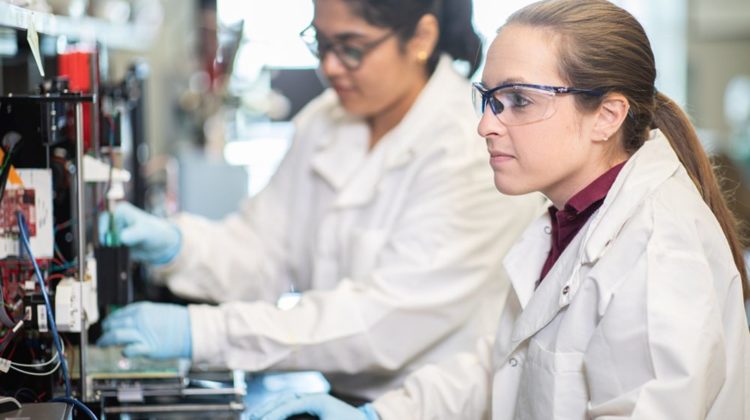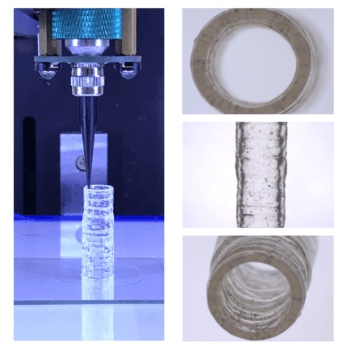
Researchers in Texas A&M University’s Department of Biomedical Engineering have designed a 3D-bioprinted model of a blood vessel that mimics the native vascular function and disease response, paving the way for the creation of new cardiovascular drugs.
Although vascular diseases such as aneurysms, peripheral artery disease and clots inside blood vessels account for 31 per cent of global deaths, advancements in the creation of new cardiovascular drug treatments have slowed over the past 20 years.This is largely due to a general lack of efficiency in converting possible treatments into approved methods, which is itself caused by a discrepancy between studies that take place outside the body and those that take place inside. Now a team led by assistant professors Akhilesh Gaharwar and Abhishek Jain has designed a new ‘bioink’ that can be used to create blood vessels in the laboratory that could bridge the gap between external and internal studies.

Bioprinting in 3D has already been used to build tissue-shaped constructs in a layer-by-layer fashion with embedded cells. When the technique works properly, the constructs will mirror the native, multi-cellular makeup of the tissues. However, when it’s used to make vascular structures, the currently available hydrogel bioinks lack high printability and are unable to deposit a high density of living cells into complex 3D architectures, making them less effective.
In order to address these shortcomings, Gaharwar and Jain developed a new nanoengineered bioink that could be used to print anatomically accurate, multicellular blood vessels.Their approach offers improved real-time resolution for both macro-structure and tissue-level micro-structure, which is impossible with currently available bioinks.
‘A unique characteristic of this nanoengineered bioink is that, regardless of cell density, it demonstrates a high printability and ability to protect encapsulated cells against high-shear forces in the bioprinting process,’ Gaharwar said. ‘Remarkably, 3D-bioprinted cells maintain a healthy phenotype and remain viable for nearly one month post-fabrication.’
These unique properties enabled the printing of the nanoengineered bioink into cylindrical blood vessels that consisted of living co-cultures of endothelial cells and vascular smooth muscle cells. Because the vessels mimic the structure and function of natural blood vessels, they will enable medical researchers to more accurately model normal vascular function and the impact of disease and toxins, as well as the effects of experimental drugs in preclinical trials.
The results of the study have been published in Advanced Healthcare Materials.



